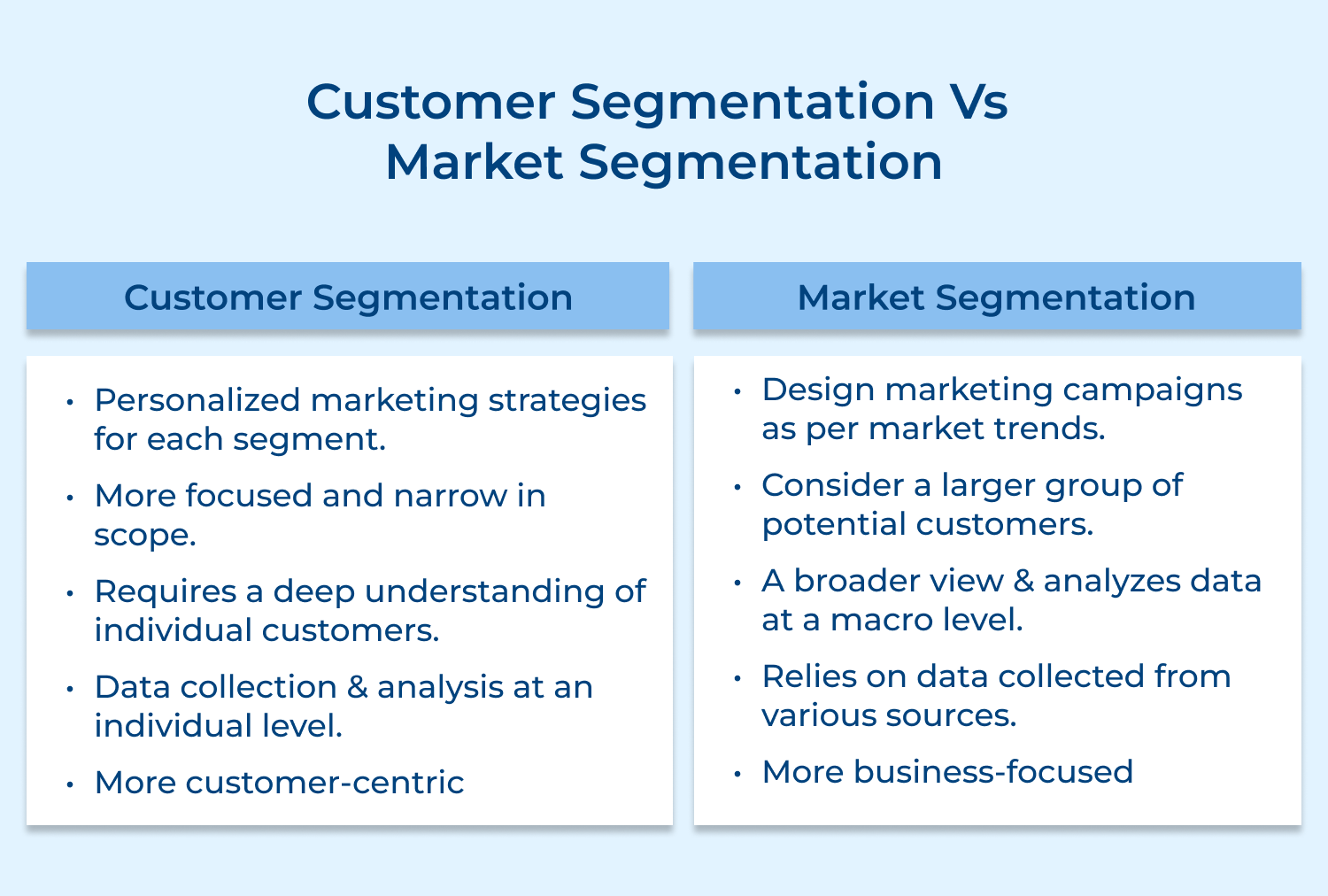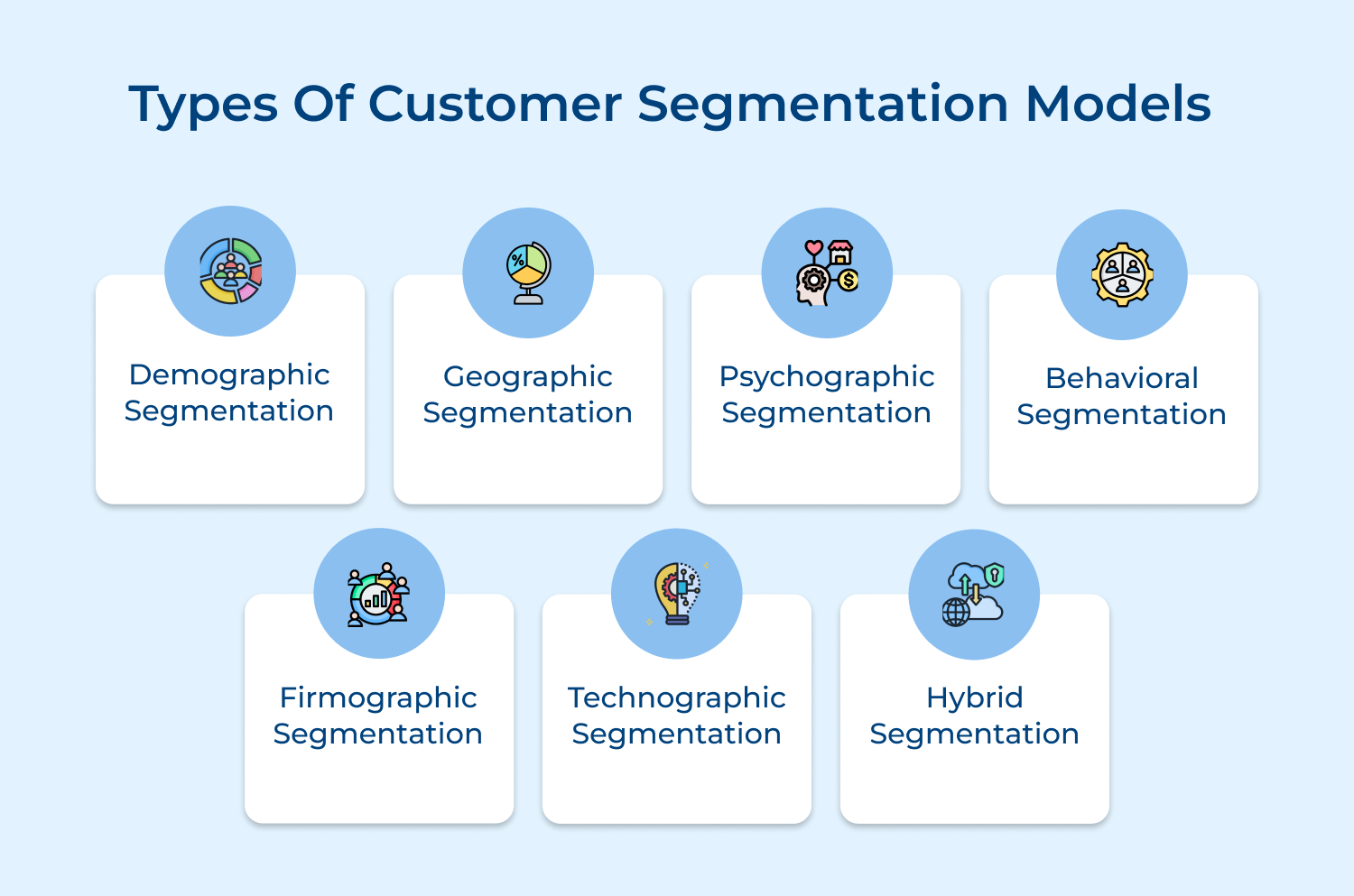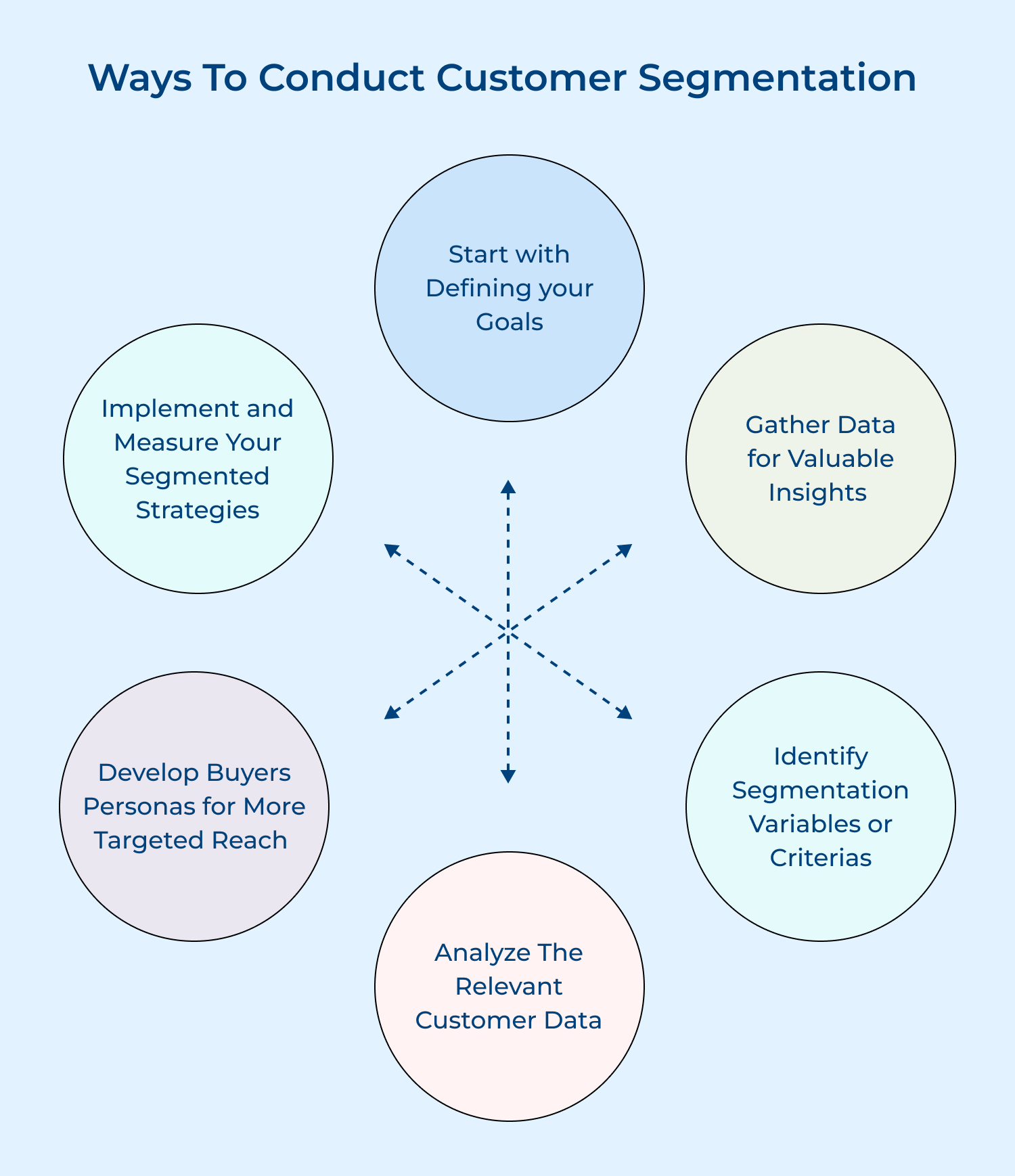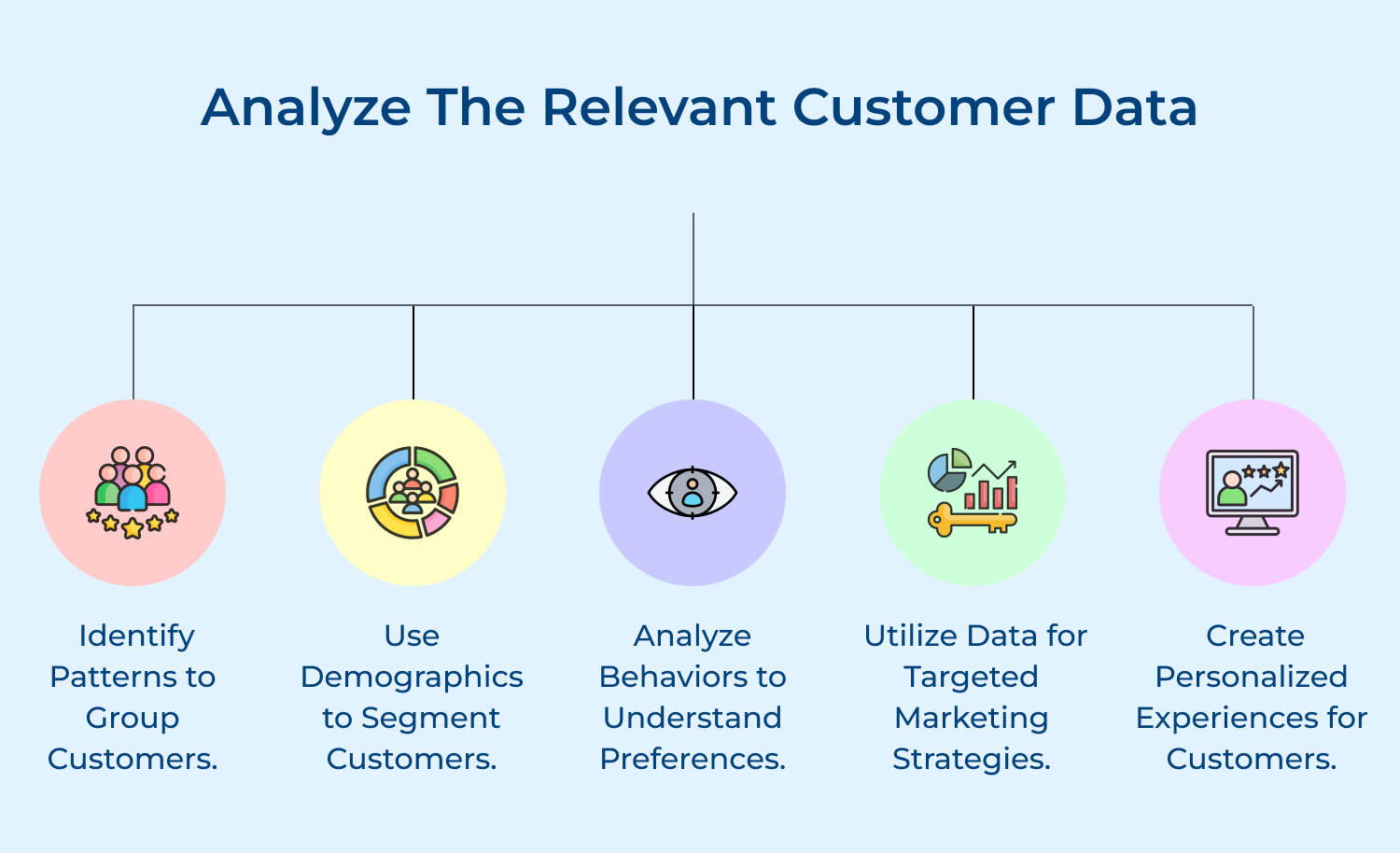1. Start with Defining your Goals
Before starting the customer segmentation process, it’s essential to have a clear understanding of what you want to achieve. Determine the specific objectives you hope to accomplish through customer segmentation, such as increasing customer satisfaction, improving targeting or driving sales.
Pro tips:
- Identify your business objectives: Are you looking to increase sales, improve customer satisfaction, or expand into a new market? Clearly defining your business objectives will help you align your customer segmentation goals accordingly.
- Define your segmentation criteria: Before gathering data, it is essential to clearly define the criteria for segmenting your customers. Identify the key factors that differentiate your customers, such as demographics, psychographics, buying behaviors or geographic location.
2. Gather Data for Valuable Insights
Collect relevant information about your customers, such as demographics, behavior, psychographics, buying patterns and preferences. Data can be collected through surveys, interviews, website analytics, social media monitoring or customer feedback.
Pro tips:
- Conduct customer surveys: Surveys are an excellent way to gather specific information directly from your customers. Design surveys that capture insights related to your segmentation criteria and use tools to analyze the results efficiently.
- Employ data analytics tools: Leverage data analytics tools to analyze large datasets quickly and derive actionable insights. These tools can help identify patterns, trends and correlations that might not be immediately apparent, enabling you to make data-driven segmentation decisions.
3. Identify Segmentation Variables or Criteria’s
Once you have the data, identify the variables or criteria you will use to divide your customers into segments. These variables can include age, gender, location, income level, interests, buying, frequency or purchase history. Choose variables that are meaningful and align with your marketing goals.
Pro tips:
- Study psychographic factors: Psychographic variables delve deeper into customers’ behaviors, attitudes and motivations. Factors like personality traits, values, opinions and interests can help you understand what drives your customer’s purchasing decisions.
- Examine behavior patterns: Analyzing customer behavior, such as past purchases, browsing history, or frequency of interactions, provide insights into their preferences and buying habits. The data helps in identifying segments with similar behavioral patterns.
4. Analyze The Relevant Customer Data
Use statistical analysis or data visualization tools to analyze the collected data. Look for patterns, trends and correlations that help you identify distinct customer segments. The analysis will help you gain valuable insights into consumer behavior and preferences.









